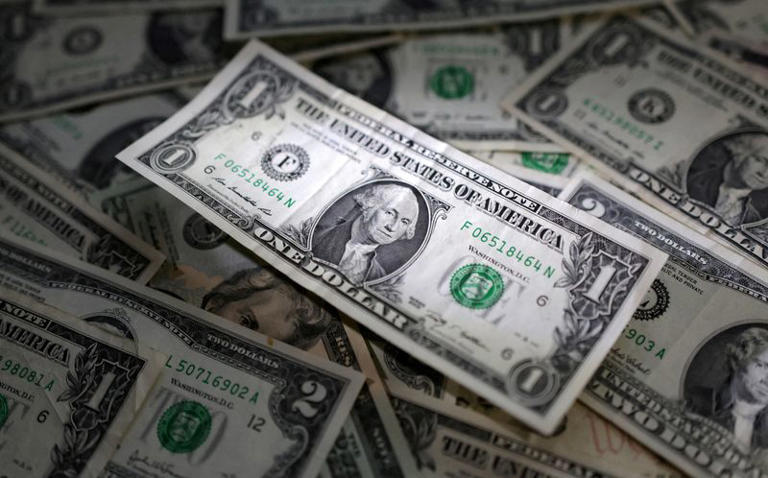The dollar maintained relative stability on Monday as investors awaited key economic data releases throughout the week, including the U.S. core personal consumption expenditures (PCE) price index, which serves as a crucial gauge of inflation for the Federal Reserve. Analysts anticipate a 0.4% increase in the PCE index on a monthly basis, with the data scheduled for release on Thursday.
In addition to the U.S. inflation figures, other major economies such as the euro zone, Japan, and Australia are also set to report their respective inflation data this week. Moreover, investors will closely watch for the Reserve Bank of New Zealand’s (RBNZ) rate decision and China’s Purchasing Managers’ Index (PMI) surveys.
Amid these developments, the euro strengthened slightly against the dollar, rising 0.1% to $1.0834. This upward trend marks the euro’s eighth gain against the dollar in the past nine trading sessions.
European Central Bank (ECB) officials have emphasized their vigilance regarding inflation trends, particularly focusing on factors such as service sector dynamics and wage growth. ECB President Christine Lagarde recently commented on the moderation in wage growth but cautioned against premature assumptions about inflationary pressures.
Despite expectations of a cooling inflation rate in the euro zone, the ECB has shown reluctance to discuss potential rate cuts, as reflected in its meeting minutes. This stance, coupled with a modest uptick in inflation expectations in the euro zone, has contributed to a positive market sentiment, leading to an outflow of safe-haven flows from the dollar and supporting the appreciation of the euro.
One significant factor bolstering the euro’s recent strength is the diminishing disparity in market expectations regarding interest rate trajectories between the United States and the euro zone. Just a fortnight ago, investors anticipated the Federal Reserve to implement approximately 80 basis points of rate cuts throughout the year, while expecting the European Central Bank to enact around 100 basis points of cuts. However, as of Monday, this gap has substantially narrowed.
The focal point for investors this week will undoubtedly be Thursday’s release of the U.S. core Personal Consumption Expenditures (PCE) data. Heightened levels of producer and consumer inflation readings have heightened anticipation that the core PCE figure might surpass expectations as well. Such an outcome could further delay the projected timeline for the Federal Reserve’s initial rate cut.
According to the CME FedWatch tool, current market pricing suggests only about a 20% probability of the Fed initiating rate cuts in May, a significant shift from the nearly 90% probability estimated a month earlier. This evolving sentiment underscores the growing uncertainty surrounding the timing of potential monetary policy adjustments by the Federal Reserve, reflecting the fluid dynamics of inflationary pressures and economic conditions in the United States.
Carol Kong, a currency strategist at Commonwealth Bank of Australia (CBA), expressed the view that upcoming data releases may potentially exceed current market expectations, possibly leading to a modest strengthening of the dollar. The dollar index showed a slight decline, hovering at 103.89.
On Tuesday, Japan is set to release nationwide consumer prices, with forecasts indicating a slowdown in core inflation to an annual rate of 1.8% in January, marking the lowest level since March 2022. This development could complicate the Bank of Japan’s (BOJ) plans to phase out negative interest rates in the coming months, exerting downward pressure on the yen in the short term. The yen was marginally lower at 150.61 per dollar, having already depreciated by over 6% against the U.S. currency since the beginning of the year.
Jane Foley, head of FX strategy at Rabobank, noted that news of Japan entering a technical recession in the second half of 2023 might temper market expectations regarding the BOJ’s monetary tightening efforts.
Meanwhile, the British pound saw a 0.1% increase against the dollar, reaching $1.2677, but edged 0.1% lower against the euro, trading at 85.48 pence.
In the cryptocurrency market, ether surged by up to 6.5% to surpass $3,130, marking another two-year high. It later consolidated, showing a 4.3% increase at $3,068. Bitcoin also experienced a modest uptick of 0.3%, reaching $51,149.
